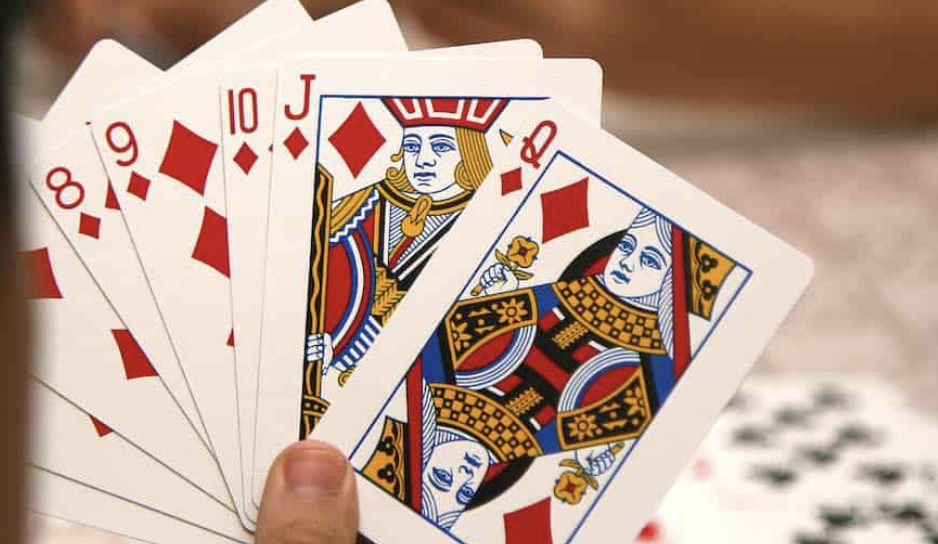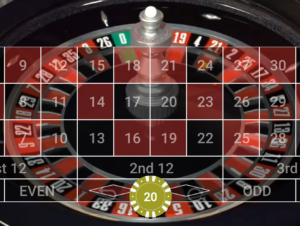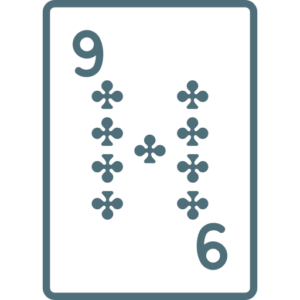People have enjoyed playing card games for hundreds of years. In these games, you don’t use real money to gamble; they’re sociable, portable, and have simple rules. Playing cards with your friends and family members are always fun.
People love playing a broad range of board, tabletop, or card games. With a conventional 52-card deck, you may play any of them, from the simple to the sophisticated.

Card Games for Two People
Most multiplayer card games, including those listed below, may be scaled up or down to suit more or fewer players. There are versions for three players, but two players’ options are the most favorable; here are a few you could try:
- 500 Rummy
This is one of my favorite games since it is quick to play, has easy-to-understand rules, and offers the dramatic prospect of losing the game in the beginning but winning it in the end. It is a member of the rummy family of card games, which require assembling sets and sequences of cards.
Play sets of at least three cards of the same rank, such as three sevens, or runs of cards in a row of the same suit to score points (e.g., 10, queen, or spades).
Rounds of the game terminate when one person has no cards remaining in their hand. The catch is that your score will be reduced by the value of any cards you still hold in your hand after the round.
There are two main approaches: try to finish the round quickly to catch the other player(s) off guard with a lot of cards in their hand, or try to extend the round as much as you can so you have more chances to pick up cards and score points.
The downside of the first approach is that even if you don’t have to deduct anything, achieving a high score in a brief round can be challenging. The second strategy’s disadvantage is that you must pick up cards to score highly, and you might be penalized heavily if another player ends the round. You may change your approach depending on the cards handed to you in each round.
How to Play 500 Rummy
Two jokers are added to the standard 52-card deck to make 54 cards for 500 Rummy. There might be anything from 2 to about eight people in the game. Two decks shuffled together (108 cards) should be used when there are five or more players.
- Cribbage
You may already know that cribbage uses a board to record scores, even if you’ve never played before. The board is a favorite game component since it is recognizable, but you don’t need one to play. If you don’t have a board handy, you may keep scores using a pen and paper.
By producing groups of two or more cards with the same value, runs, and card combinations that total 15, you may gain either 61 or 121 points (you can play to either total). Throughout the play, the running total cannot go beyond 31. It’s a strange game with three different stages where you may earn points, but it’s not nearly as difficult as it seems.
Each player receives six cards when they are dealt, but they must discard two, placing them in the crib, the additional hand from which the dealer might get points.
Cribbage is the ideal synthesis of skill and chance. Due to the discard rule, you must decide on your plan before knowing whether you can carry it through. Random cards are also dealt face up, and players are allowed to include them.
The game is over when either player, whether via pegging or counting their hand, achieves the predetermined amount; the game is over.
How to Play Cribbage
You may play cribbage with two or three players or even two teams of two players. A sequence of hands, each of which has three pieces, make up the game. The first step is the deal, whereby each player is given six cards and must discard two of them into the “crib” (also known as the “box” or “kitty”) so that they may later be brought back into play. Then, players take turns dealing cards to accumulate points by making certain combinations and adding the card’s face
The Best Old Favourites
These well-known classics are a mainstay of seasoned card tables and are often played late into the night because they are among the most friendly card games and have influenced gaming, movies, and television.
- Euchre
Euchre is a trick-taking card game for four, played on two teams. It helps to have a good understanding of your mate. Confidence is critical.
The goal is to win three tricks, with an extra point awarded for winning all five. This is accomplished by using the round’s highest-ranking card. When a trump suit is called in euchre, all cards of that suit and the jack of the same color become the highest-ranking cards in the game.
The secret is to have faith that your partner is competent. You may expect to win the trick if your partner plays an ace. Therefore, it is not worth playing a card higher than an ace. You may put the ace in your pocket for later use.
How to Play euchre
You must understand the fundamental principles of the game before beginning. Every hand is made up of three stages.
Five cards are handed to each player, leaving four for the “kitty.” Starting to the left of the dealer, each player must decide on whether or not they want the suit of the flipped card to be trump. If they do, they tell the dealer to “pick it up” or “order it up.”
- Poker
To win money is the goal in poker (or chips, which may or may not represent money). You may either achieve this by creating the most substantial five-card hand at the table or by winning by bluffing with a weaker hand and convincing other players to fold. The game may be played as formally or casually as you wish, whether you’re playing at home or a casino.
How to Play Poker
Although poker is often played for real money, it is easier to play with chips than with genuine money. These often come in different denominations, sometimes with the numerals 1, 2, 5, 10, 20, 50, 100, and 500, and occasionally sporting colors like red, white, and blue, the values of which must be mutually accepted. Before the game begins, players purchase chips from the host, which they later exchange for cash.
- Hearts
Hearts is a trick-taking game similar to euchre. However, the goal is not to get points and to take as few tricks as possible, calling it “the game of evasion.” Hearts may be played with any number of individuals from three to four but often involves a four-player match.
After the deck is exhausted, each heart is worth one point, and the queen of spades is worth thirteen. After the initial trick, it’s typical to start with a low-ranking spade to force the queen to the table. Any player who reaches 100 points first wins. The winner is the player with the fewest points after everyone has scored.
Shoot for the moon to take down all 13 hearts and the queen of spades if you feel confident in your hand. You can have 26 points subtracted from your score or add 26 points to everyone else’s.
How to Play hearts
The holder of the two clubs must guide it to the first trick. If feasible, each remaining player must play a card from the lead suit in turn-taking order. You may play any card if they don’t have a card in that suit. The player who led the following trick and played the highest card in the suit wins the current trick.
The Best Games to Play as a Family
Card games are a fantastic method to enhance your children’s math and strategic abilities. Though many are appropriate for kids, don’t assume that adults also can’t enjoy them. Try some of them as a family; before you know it, your children will ask you to teach them arithmetic.
- Cheat
Cheating is fun, particularly if you have young kids who don’t mind getting into trouble once in a while. It’s a fulfilling game since there’s nothing like discovering that a fellow player is lying about having certain cards when you own them.
By sequentially playing each of your cards, you must eliminate all of your cards from the game. The fun thing is that if you can’t play your threes when it’s time to discard, you may pretend that your two threes are two sevens to attempt to discard more cards than the rules permit.
Both kids and adults will love discovering other players cheating and getting away with it.
How to Play Cheat
The participants are handed all the cards; some may get more than others. Getting rid of all of your cards is the goal. Choose at random who will go first, then go clockwise.
A turn includes calling out the rank of discarded cards and placing them face down on the pile. Aces must be discarded by the first player, Twos by the second, Threes by the third, and so on. Tens are followed by Jacks, then Queens, Kings, and so on.
You are not required to play the rank you call since the cards are discarded face down. When it is your turn to discard Sevens, for instance, you may discard any card or combination of cards, but if you don’t have any Sevens, you must play another card or cards.
- Fan Tan
Most families enjoy playing fan tan while wrapping up their card game nights since the deck is automatically reshuffled at the end of the game. It’s simple: get rid of your hand by playing cards in succession.
If you have a seven, you may irritate other players who have cards of the same suit as you by holding on to them.
How to play Fan Tan
All the cards are dealt face up on the table at the start of the game, with the seven in the center, followed by a row for each suit that progresses down to the two on the left and up to the ace on the right.
Start with the person to the dealer’s left and clockwise around the table. You must add a card to the tableau when it’s your turn.
- 99
This game demands rapid mental addition and is fast-paced. You may use a cheat sheet to keep track of the values and actions associated with particular cards.
Playing cards must be done so as not to increase the value of the central pile over 99. You may increase the value to 99 to make the other players struggle and switch the play’s direction when necessary to rescue yourself. To have them available when you need them, it is preferable to keep your unique cards and cards of lower value until the latter phases of the game.
The rapid pace of the game and developing escape routes while the pile’s worth is high will appeal to kids.
How to Play 99
Each participant starts the game with five cents (or chips). Deal each player three cards from a regular 52-card deck; if there are more than four players, use two decks and give each participant only three coins. A face-down stock is created on the table using the undealt cards.
The turn moves clockwise, starting with the player on the dealer’s left. You play one of your three cards face-up on the table on each turn, then shout out the face-up pile’s total value before drawing the top card from the stock. The count is 0 when the face-up pile is empty. The total value of the pile should be increased by the pip value of each card played. Queens and Jacks add up to 10. The following cards have unique effects:
- Ace: The value of the pile is increased by one or eleven points, according to the player.
- Four: The pile’s worth stays the same, but the play is done the other way.
- Nine counts as zero; the pile’s worth stays the same; the following player, in turn, now has the play.
- Ten: The player may choose to boost or decrease the value of the pile by ten.
- King: The pile’s value is set to 99.
You must put your hand down if you cannot play without raising the pile’s value over 99. Players with no pennies left in their possession forfeit the game when the play closes. The player to the left of the previous dealer who is still in is the one who receives the deal after each hand. Once just one person is left with pennies, the remaining player is declared the winner.
When someone plays a nine or a four, they yell out “pass to you #” or “back on you #,” following the value of the pile. This scene is from a four-player game, where play is now going clockwise. The first player rolls a King and says, “99.” Player 2 plays a nine and says, “Pass to you 99,” while staring at Player 3.
Since the play sequence will go counterclockwise until another four is played, player 3 plays a four and says, “back on you 99,” staring at player 2. The second player plays a 10 and says “89.” The first player rolls an eight and says “97.” The game moves clockwise as Player 4 plays a four, looks at Player 1, says, “Back on you, 97,” and so forth.



